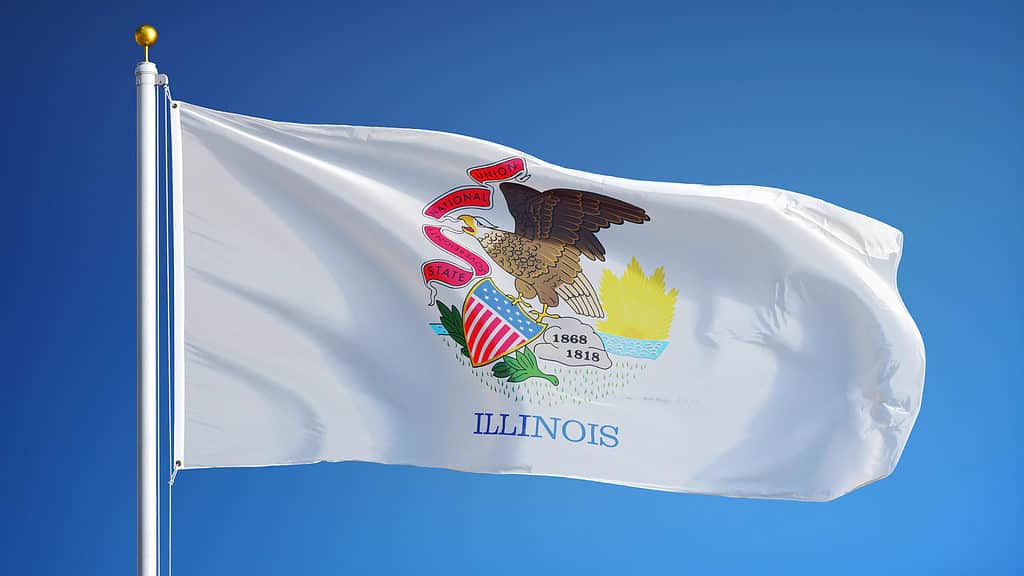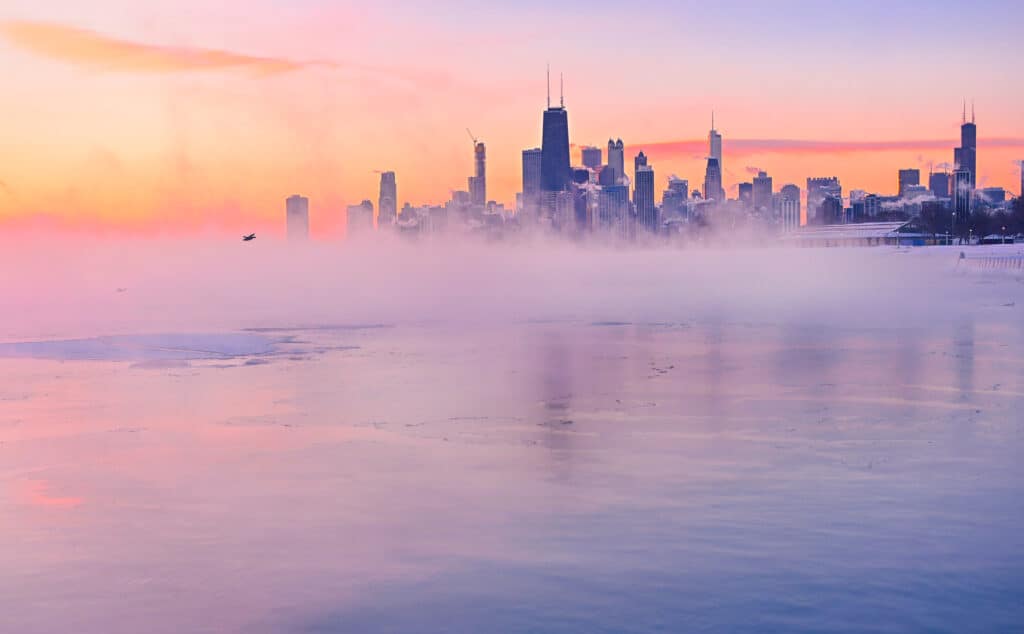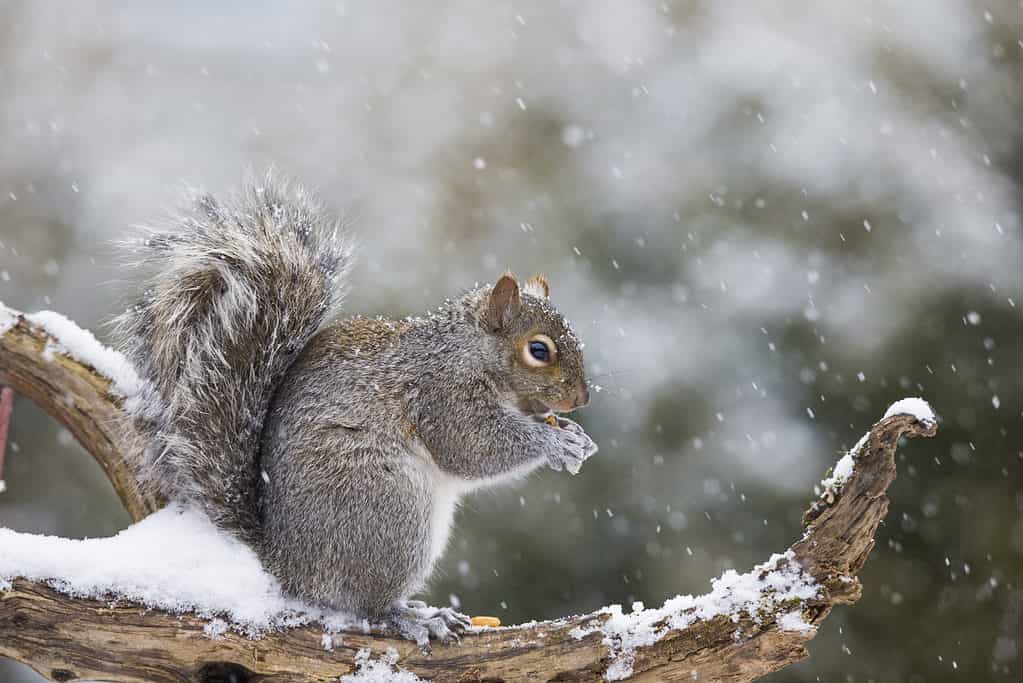The climate in Illinois provides fairly dramatic swings in temperatures throughout the year. Spring and fall often feature delightfully temperate conditions, while summer temperatures can make Illinoisans feel like they’re being cooked. And then, there are those Illinois winters that can feature bone-chilling cold.

©railway fx/Shutterstock.com
The small town of Chestnut is only about eight miles from the exact geographic center of Illinois, providing an excellent location to observe average temperatures in the state. January is the coldest month in Chestnut with an average high temperature of 33°F. July is the hottest month, featuring an average high of 86°F. The average low temperatures for Chestnut during those months are 16°F in January and 64°F in July.
Average temperatures such as these make the records for Illinois all the more mind-boggling. The hottest temperature ever recorded in Illinois was on July 14, 1954, when East St. Louis climbed to a sweltering 117°F.
But how about this teeth-chattering cold record? The coldest temperature in Illinois history was documented on January 31, 2019, when Mount Carroll dropped to a temperature of -38°F. That is a swing of 155°F between the hottest and coldest temperatures ever recorded in the state!
Mount Carroll
Mount Carroll, which recorded Illinois’ coldest-ever temperature, is the county seat of Carroll County. Located in northwest Illinois, Mount Carroll is roughly 10 miles from the Mississippi River and the Illinois/Iowa border, and a little over 30 miles south of the Illinois/Wisconsin border. Mount Carroll is about 240 miles west-northwest of downtown Chicago.

Meteorological Records
Records such as a state’s highest or lowest temperatures must be fact-checked. Misleading and erroneous reports of weather records are commonplace on the internet. Only records verified by the National Oceanic and Atmospheric Administration (NOAA) should be trusted.
A group of meteorologists and climatologists studied the Mount Carroll data from January 31, 2019. The National Weather Service in Davenport, Iowa, which covers the weather conditions in northwest Illinois, confirmed the equipment at the weather observation station in Mount Carroll was functioning correctly and that proper protocols had been followed when recording the temperature on the day in question.
The record cold was in-line with the observed weather conditions that day. The skies were clear. Winds were light. There was a snowpack on the ground. These were ideal conditions to send temperatures plummeting.
Researchers further noted that seven other observation locations near Mount Carroll also reported temperatures of -30°F or lower that same morning. Mount Carroll was not an exception or outlier.
After about a month and a half of study, researchers concluded the data from Mount Carroll’s observation station was accurate and had been corroborated by other weather stations and observable weather conditions. It was officially determined that a new cold-temperature record for Illinois had been set.
NOAA announced the findings on the National Centers for Environmental Information’s Twitter account.
Official meteorological records for cold, heat, and precipitation in every state can be accessed on the National Centers for Environmental Information website.
A Record-Setting Polar Vortex
The cold temperature record set that day in Mount Carroll surpassed a record that had stood for 20 years. The previous record for the coldest Illinois temperature was set on January 5, 1999, when the temperature in Congerville bottomed out at -36°F.

©Jake Hukee/Shutterstock.com
That final week of January 2019 is one Illinois residents will long remember. A polar vortex invaded and sent temperatures into freefall throughout much of Illinois, most notably in the state’s more northern regions.
A polar vortex refers to a large area of low pressure and cold temperatures at the earth’s poles. “Vortex” refers to the counterclockwise airflow that keeps the cold temperatures confined to the poles. While the term “polar vortex” has only recently become popular in the common vernacular, it is not a new event. The polar vortex always exists at the poles. It weakens in the summer and strengthens in the winter. During winter in the Northern Hemisphere, the polar vortex can expand and send the cold air further south. This is what brought the record-setting cold into Illinois at the end of January 2019.
Broken State Records
In many parts of northern Illinois, the high temperature for January 30 was officially recorded at midnight, with steadily falling temperatures after that. Those midnight “high” temperature readings were in the negative double digits!

One day before the Mount Carroll record, Chicago hit its lowest temperature in 34 years. The Windy City dropped to -23°F on the morning of January 30.
Rockford dropped to the lowest temperature that the city had ever seen on January 31 with a record-breaking low of -31°F. This broke the city’s previous record cold temperature of -27°F set on January 10, 1982.
Moline saw its coldest-ever low temperature on January 31 with a reading of -33°F, breaking its previous record of -28°F set on February 3, 1996.
The chill wasn’t confined to Illinois, though. Neighboring states also saw record-breaking cold temperatures. Mather, Wisconsin tied the record for the coldest-ever temperature in that area when it hit -43°F. Cedar Rapids, Iowa set an all-time cold record for the city on January 31 with a low temperature of -30°F.
All told, at least 340 low-temperature records were tied or broken throughout the Midwest due to the polar vortex at the end of January 2019.
Illinois Wildlife
The animals of Illinois have natural defenses and behaviors to counteract the harsh cold that winter brings to the Prairie State. When the record-setting cold snap blew through the state in January 2019, the state’s reptiles didn’t even know it happened. Illinois reptiles don’t emerge from their brumation until mid-March.
The birds that do not migrate south will find heavy cover during extremely cold weather. Many species also add extra feathers during the winter months. Also, it should be noted that some bird species from Canada actually migrate south to Illinois for its warm winter temperatures! The definition of “warm” certainly changes from one animal species to another.
Mammals like raccoons, squirrels, and skunks will retreat to their dens to ride out a harsh cold snap. Many mammals will also grow thicker, denser fur during the winter.

©Mircea Costina/Shutterstock.com
This is not to say that extreme cold conditions such as those seen in late January 2019 do not take a toll on local wildlife. The chilling temperatures and relative lack of food are taxing, to be sure. However, native animals of all species have tactics to survive the often-brutal Illinois winters as they wait for the bounty of spring.
Icy Waters
Lake Michigan, as well as the other Great Lakes, saw a huge increase in ice cover during this extreme winter weather event. The Lakes were at 18% ice coverage on January 26, 2019. Then the historic polar vortex barreled in from the north. The ice coverage on the Lakes jumped to 40% by February 4. The Great Lakes’ ice coverage more than doubled in just nine days!

How do fish respond when their home freezes over? Most fish will head for deeper water when the air temperature drops. While the shallows are warmer during the summer thanks to the sun and warm air temperatures, everything reverses in the winter. The deep water loses less heat than the shallows, making it warmer during the winter months. And, strange as it may sound, the ice actually helps keep water temperatures warmer during extremely cold weather. The ice acts a bit like a blanket, shielding the water from the bitter-cold winter air. So the fish of Lake Michigan and the other Great Lakes actually benefit from the additional ice cover.
The post The Coldest Temperature Ever Recorded in Illinois Will Chill You to Your Core appeared first on AZ Animals.
from Animal News, Facts, Rankings, and More! - AZ Animals https://ift.tt/fLOrY37